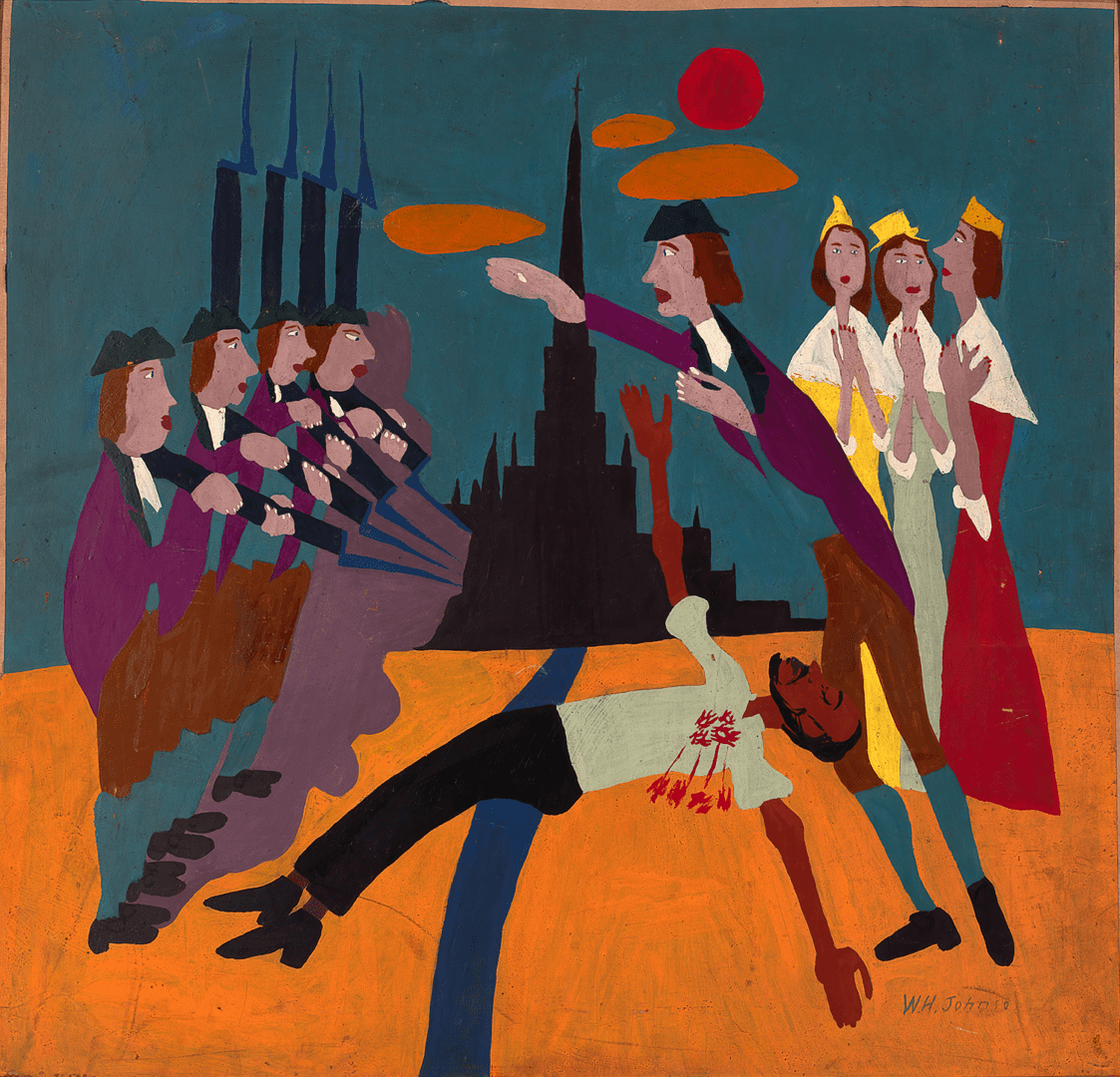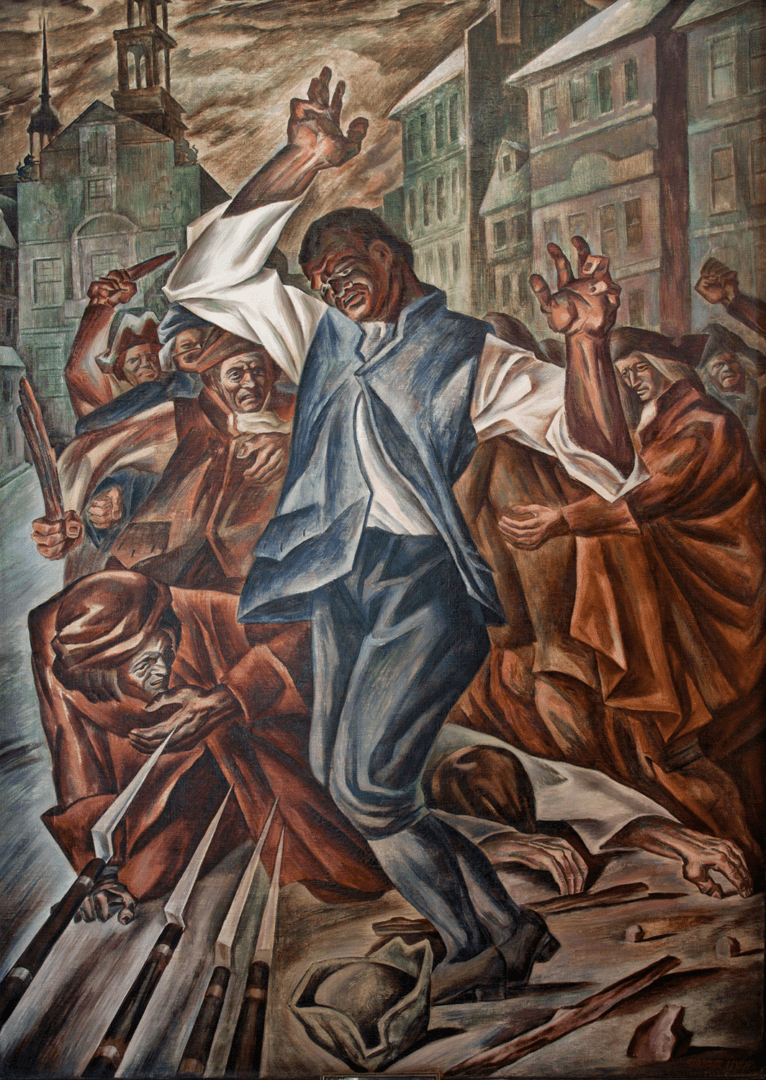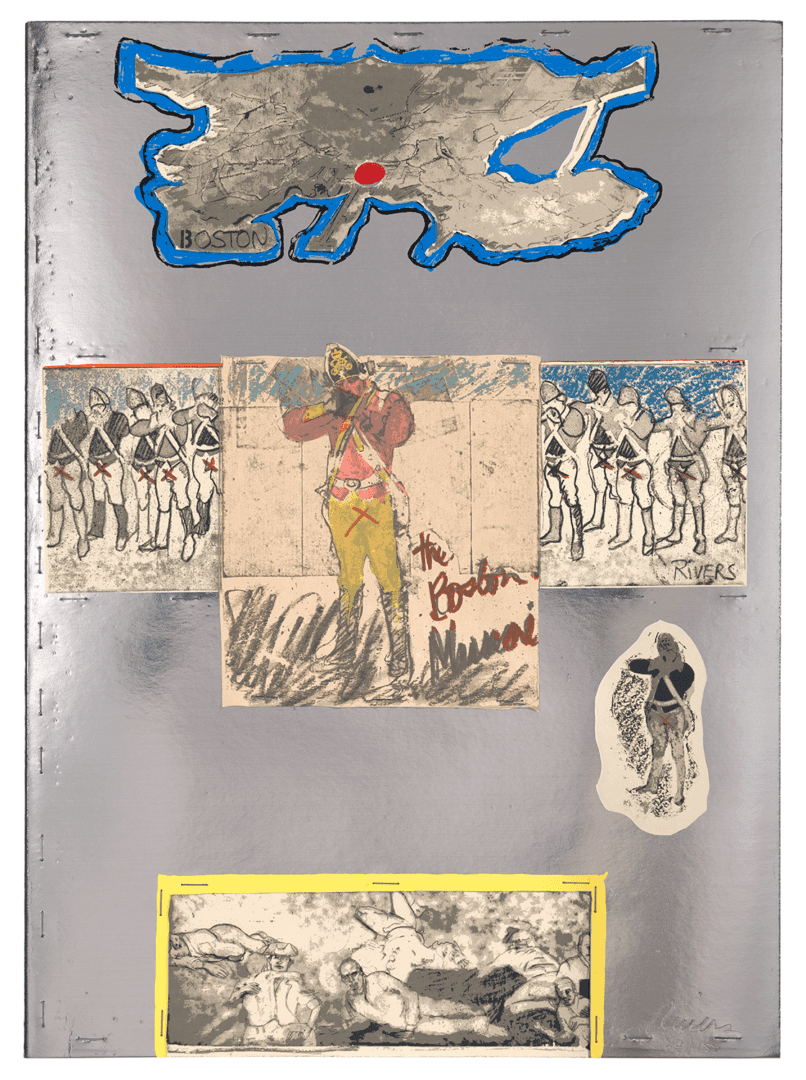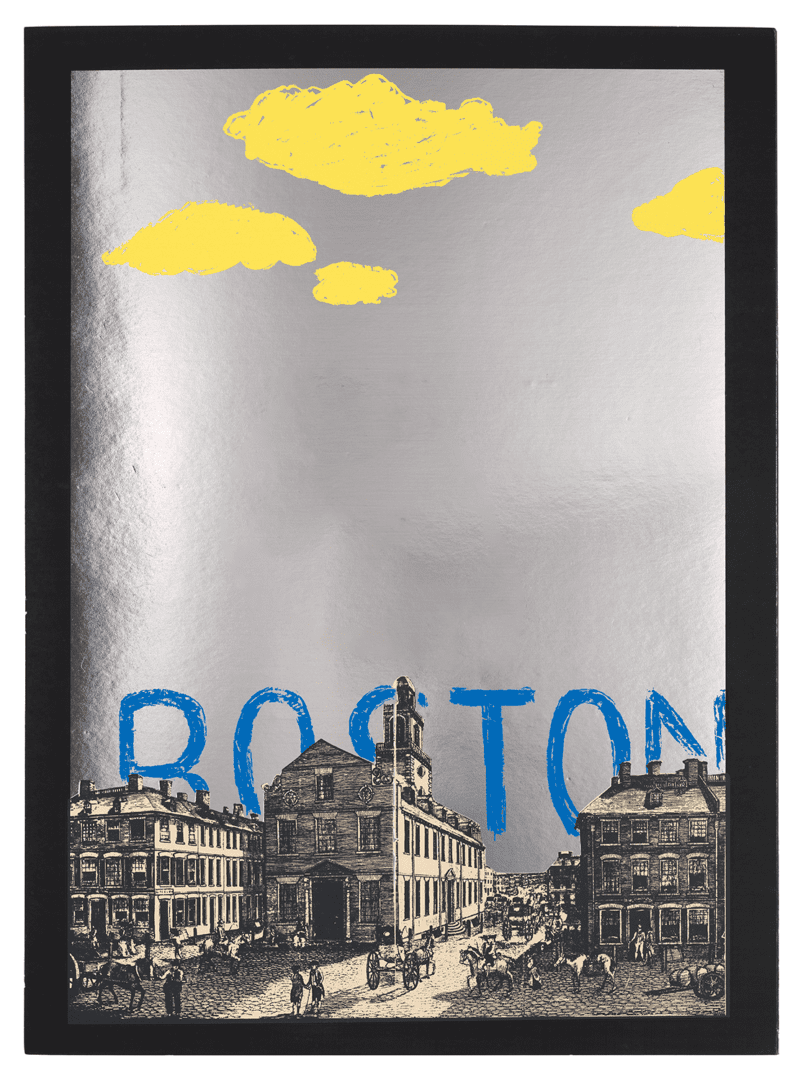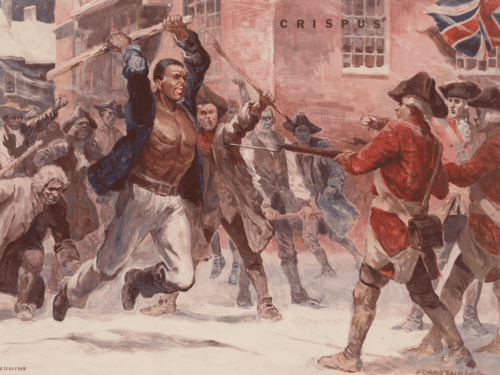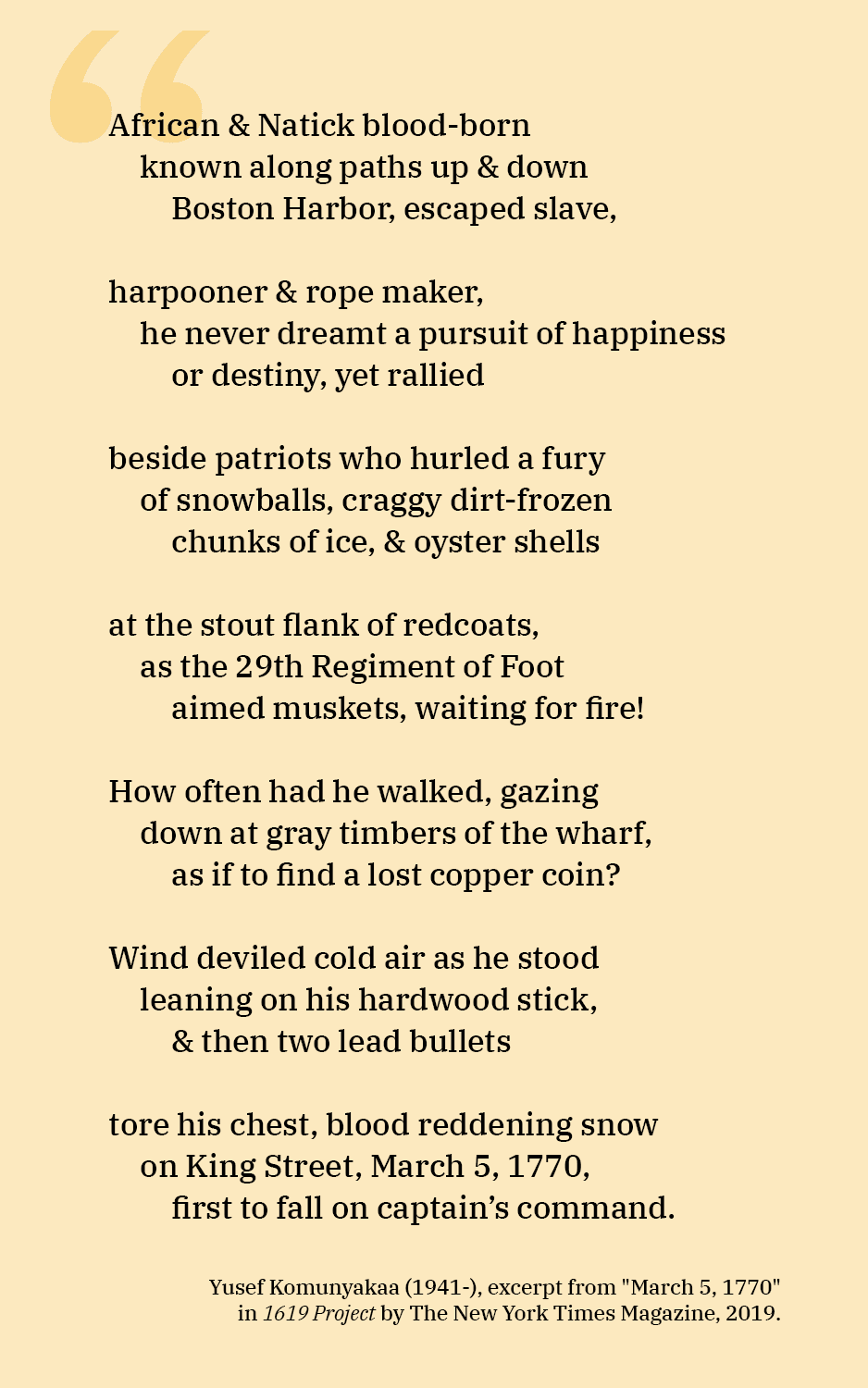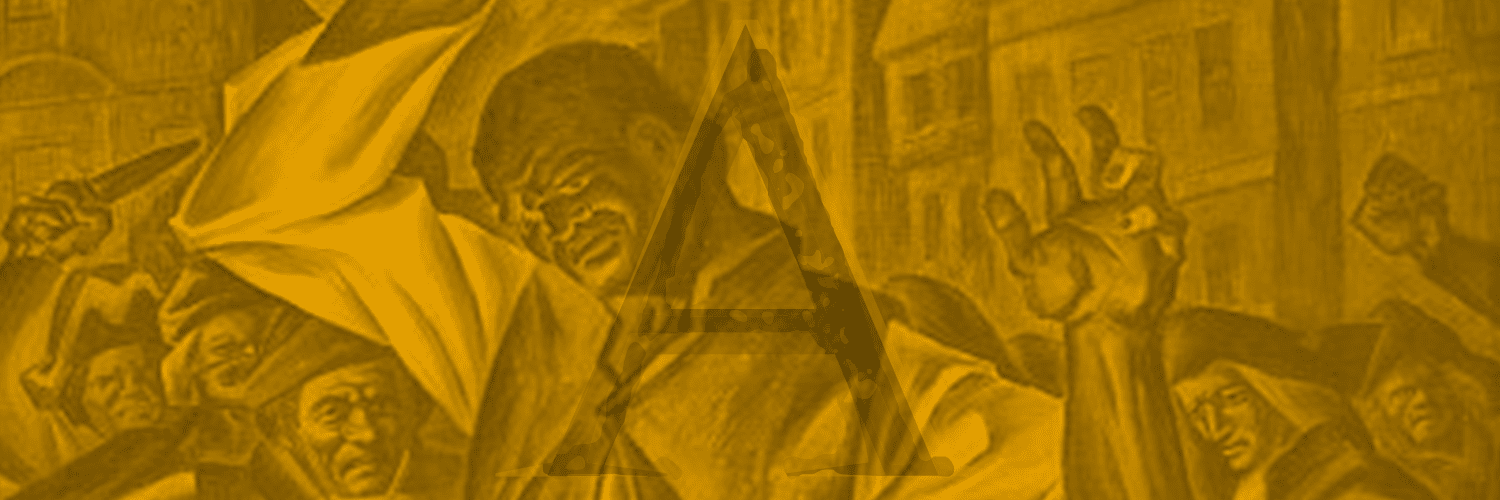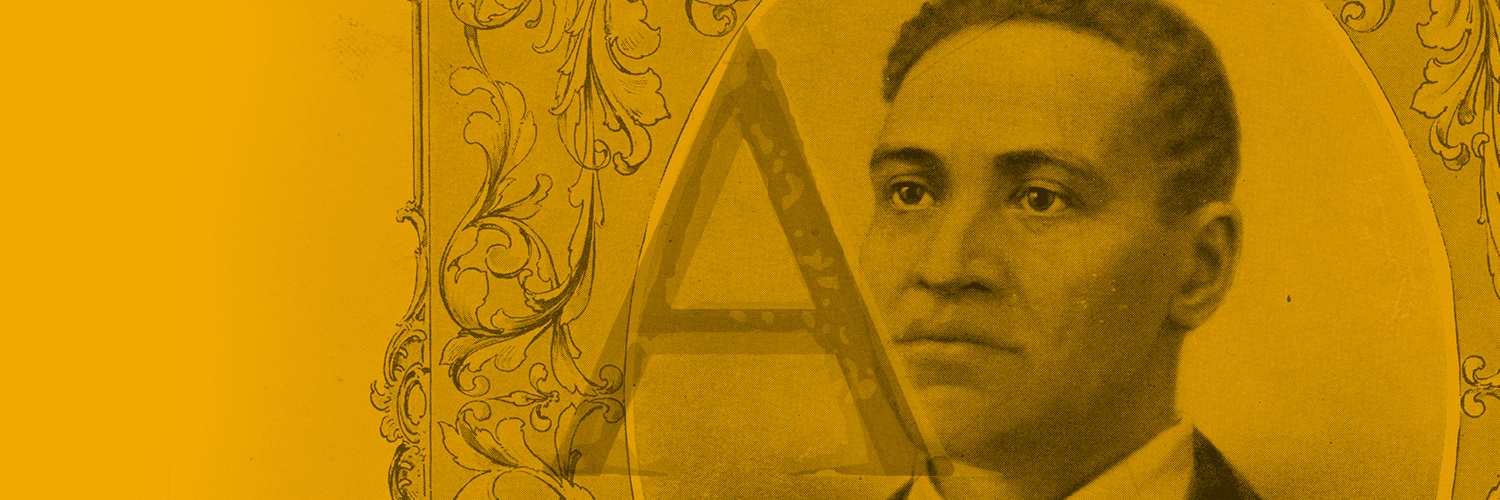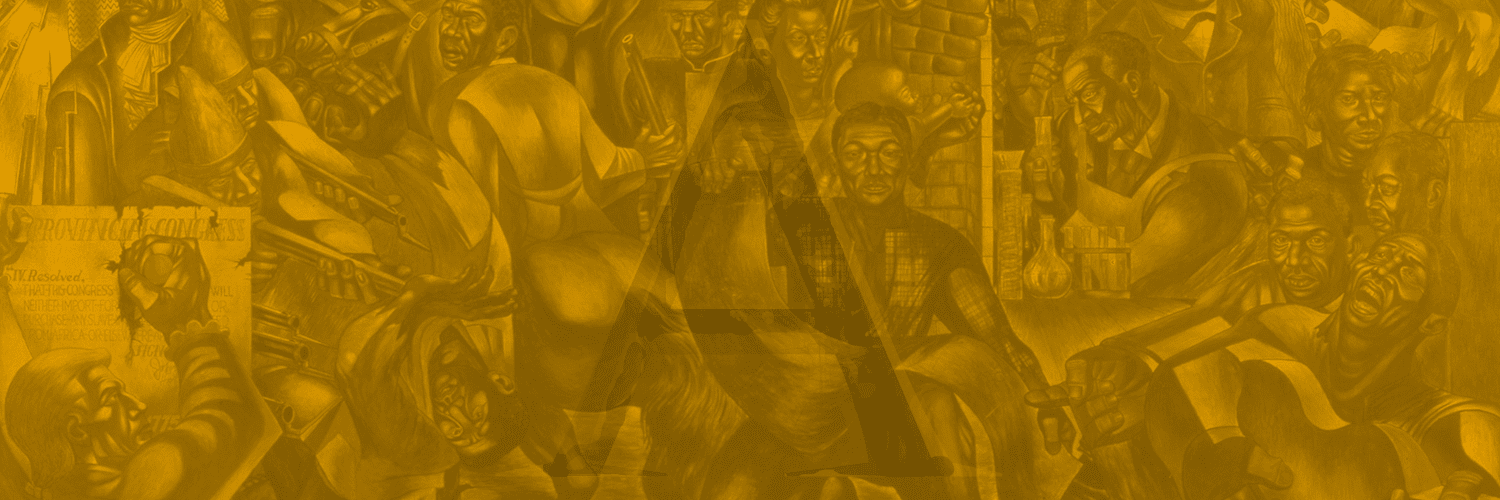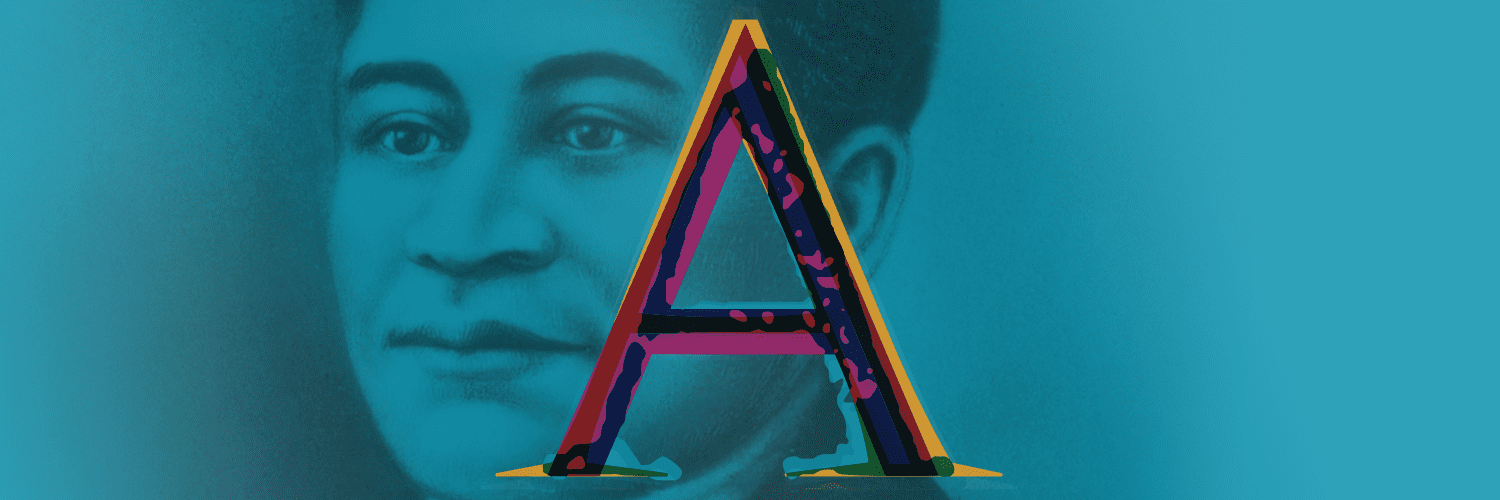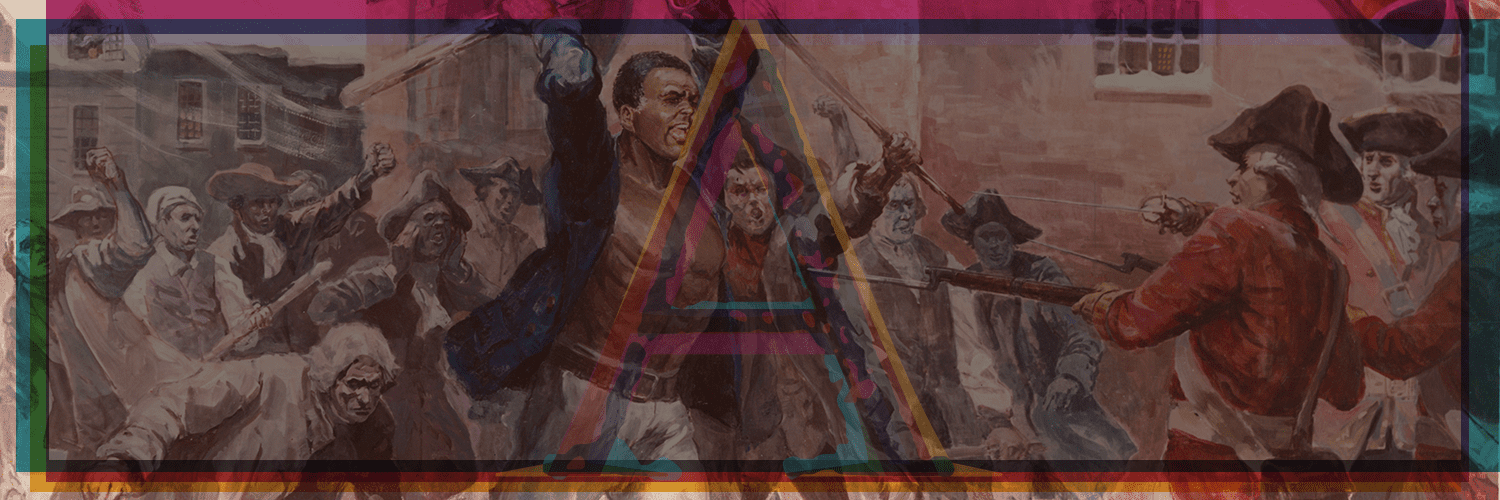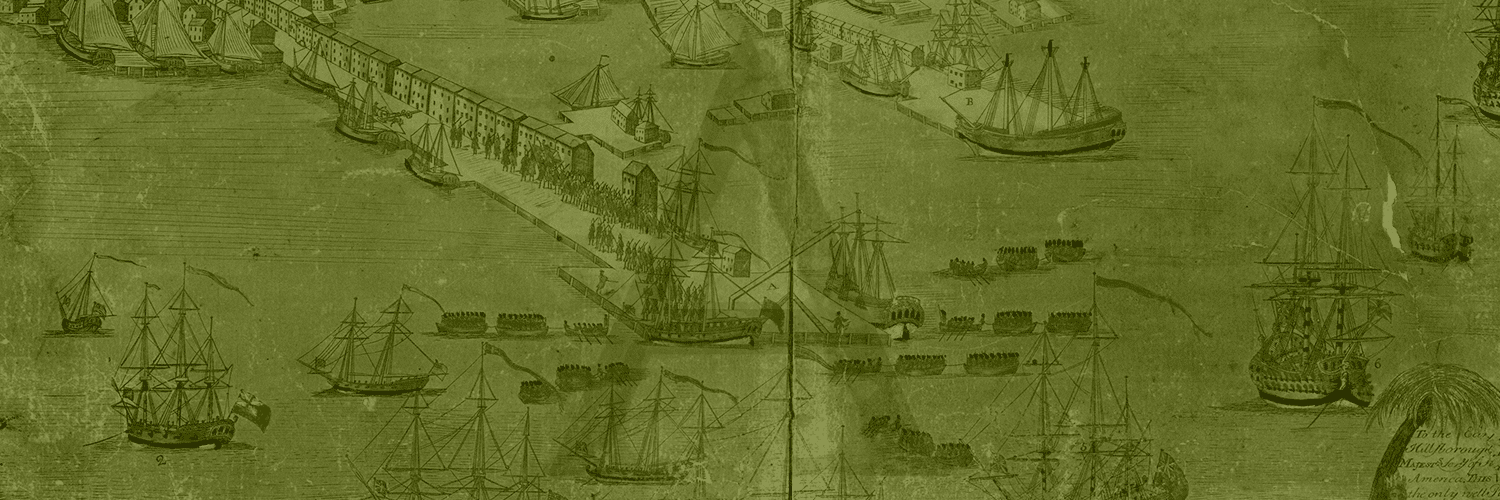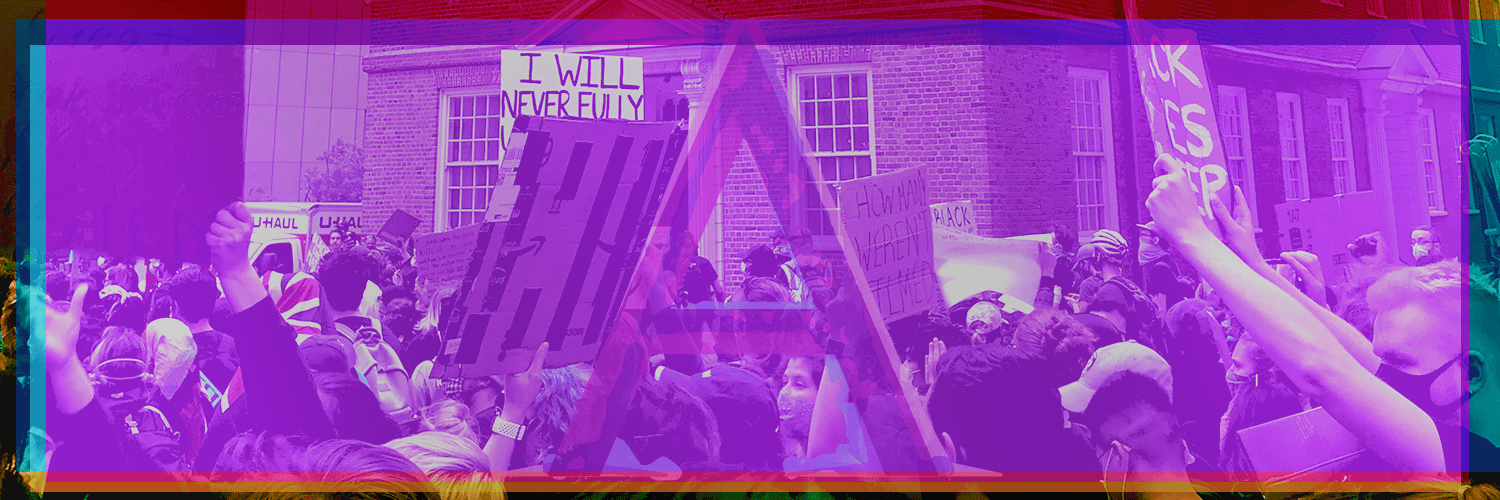Imagining The Massacre
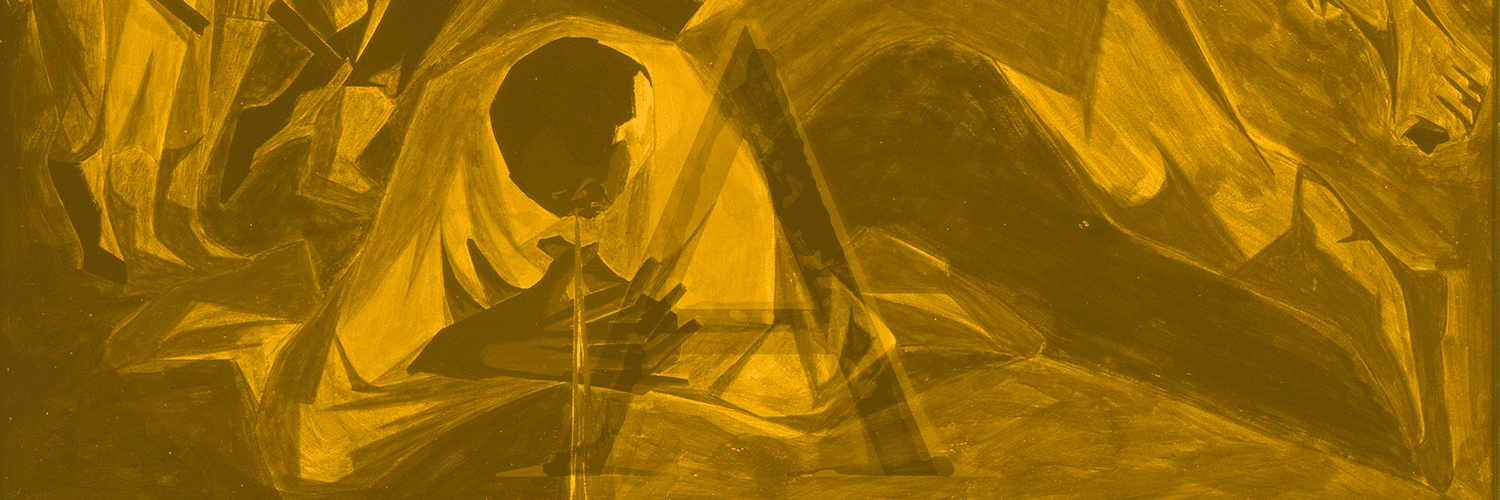
This group of objects focuses on depictions of the Massacre itself, emphasizing both Attucks’s centrality to the event, as well as the magnitude of his sacrifice. These pieces draw on Attucks’s memory to help navigate through moments of national crisis.
What challenges today evoke memories of the Massacre?
CRISPUS ATTUCKS
William H. Johnson (1901-1970)
c. 1945
Oil on paperboard
Reproduction courtesy of the Smithsonian American Art Museum, Gift of the Harmon Foundation
Click image to view larger.
William H. Johnson (1901-1970) was a prolific painter whose style evolved from realism to expressionism to the folk style for which he is best known, particularly the use of bold primary colors. This work reflects Revere’s Bloody Massacre, though the soldiers are on the left, not the right. In the distance is the outline of a city. Johnson’s work highlights the civilian reaction to the soldiers, with three lamenting women on the right. He puts Crispus Attucks alone at the center, portraying him in a Christ-like pose, emphasizing his martyrdom for black rights.
CRISPUS ATTUCKS
Herschel Levit (1912-1986)
1943
Mural, Recorder of Deeds Building, Washington DC
Reproduction courtesy of the Library of Congress, Prints & Photographs Division, photograph by Carol M. Highsmith
Click image to view larger.
Herschel Levit painted this mural for the Recorder of Deeds building in Washington, DC. It is one of seven murals in the building that places blacks definitively at the center of American history. The events of March 5, 1770 fade into the background as Attucks assumes center stage in this portrayal. Levit traps Attucks in a tight space, enclosed by the buildings and the swirling mass of the angry crowd. Attucks’s bent and raised arms echo the chaos around him, while also reaching upward, recalling a crucifixion. Four bayonets are pictured in the lower left corner held by soldiers outside the picture plane, forcing the viewer into the role of British soldier.
MASSACRE
Larry Rivers (1923-2002)
1970
Portfolio cover and verso, mixed media screen print with collage and embossing; edition 64/150
Images courtesy University Museum of Contemporary Art, University of Massachusetts Amherst. Photograph by Stephen Petegorsky.
© 2020 Estate of Larry Rivers / Licensed by VAGA at Artists Rights Society (ARS), NY
Click image to view larger.
Larry Rivers’s 1970 series was created to mark the bicentennial of the Boston Massacre. He used the event to provoke connections to the Vietnam War, which was going on at the time. Through his use of symbolic imagery and his artistic process, Rivers communicates the hypocritical nature of armed conflict in general and the Vietnam War in particular.
CRISPUS
Robert C. Frankenberg (1911-2001)
c. 1973
Reproduction courtesy of Mitch Kachun
Click image to view larger.
This image of Crispus Attucks was created in the 1970s for use as promotional artwork for the proposed film Crispus. The film was never made but the image endures, portraying Attucks as an active leader and participant at the Boston Massacre.


